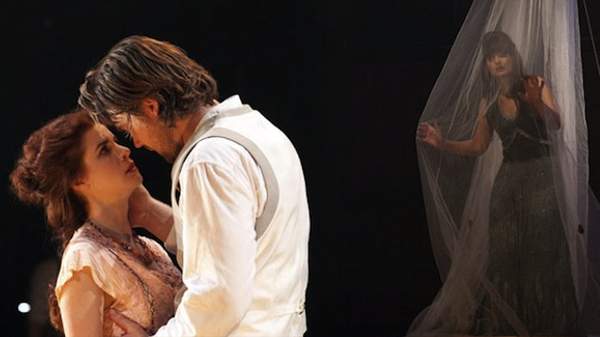Overview
We think of Charles Dickens as being a quintessentially British writer, but one of his most famous novels, 1861's Great Expectations is said to have originated somewhere nearer to us: Newtown. That's where one Eliza Donnithorne was stood up on her wedding day and for the rest of her reclusive life left her banquet table set, her wedding dress on, and her door ajar in hope of her beloved's return. Now buried in St Stephen's Cemetery, she is very like the affecting figure of Miss Havisham, whose manipulations drive much of the story of Great Expectations.
You could say, then, that Bakehouse Theatre Company and ATYP have a solid local angle for their production of this classic work. They've made it young, lively, and imbued with a feeling of magic, propelled by the energy of a 15-strong cast. The performers act as a chorus, narrating the action in Dickens' own, ever-powerful words while assuming a variety of signature Dickens characters from Pumblechook to Magwitch, Wopsle, and Biddy (Dickens' influence on JK Rowling is clear here).
The ones you really need to follow are destitute orphan Pip (Patrick Sherwood) and loftily bred Estella (Shannon Ashlyn), who are thrown together as playmates by Miss Havisham (Jacki Mison). The encounter leaves Pip desirous to rise above his station and in love with Estella, whom he cannot have because Miss Havisham, driven by bitterness and wrath, has blunted her ward to any emotion. This tragic core a charting of how hurt begets hurt, of how abuse is passed on is what makes Great Expectations one of the author's most enduring works.
This production uses a rollicking adaptation by Nick Ormerod and Declan Donnellan, founders of the UK's exciting and muscular Cheek by Jowl theatre company, who developed the text for the Royal Shakespeare Company. The use of narration is absorbing and effective and is seen at its best when it gives the actions performed space to shift from the literal to the symbolic. There's a beautiful sense of conjuring as the cast revolve around the smokey stage, pulling out props, making them disappear. The set design serves them well, as a raked, cylindrical wood platform recalls both industrial chimneys and agricultural mills and gives a clear point of focus.
The difficult part of staging such a pacey script is finding the pauses that give meaning time to land, and director John Harrison hasn't quite identified enough of them. The biggest inhibitor to the play making its proper emotional connection, though, is the extreme caricaturisation of Miss Havisham, who is played as a Cruella de Vil-esque Disney witch walking around in a daze and wearing only one shoe. It's a choice out of step with the rest of the play's romantic Victorian aesthetic and sadly denies Miss Havisham her ultimate vindication being a real, wounded character whose personal tragedy touches generations.
Information
When
Wednesday, October 31, 2012 - Saturday, November 17, 2012
Wednesday, October 31 - Saturday, November 17, 2012
Where
ATYP Studios, The WharfPier 4/5 Hickson Road
Walsh Bay
